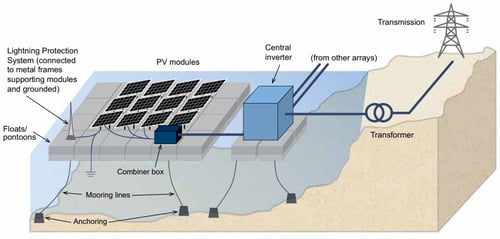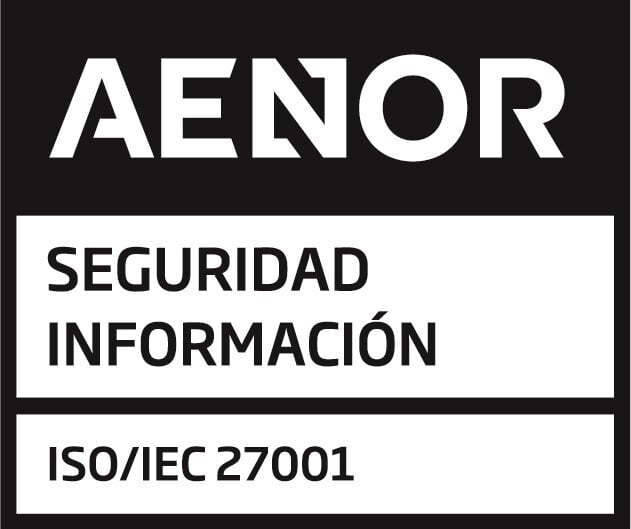There have been many solar panel technologies over the years, but one of the most captivating ones for large scale power production has to be solar on water, also known as ‘floatovoltaics’. A latest one is coming up at South Korea’s Hapcheon Dam, and will have capacity to serve 60,000 people. Many more such facilities are emerging elsewhere in the globe as the technology and solar asset management software grow exponentially.
While this happens, the question on many people’s mind is whether putting solar on water is worth the effort. Do you think this technology makes sense? Stay with us as we delve deeper into this technology, explaining the motivation behind growing uptake globally.
What is solar on water?
A typical floating solar panel installation comprises pontoons carrying solar panels and tethered to the base of a water reservoir. Direct current from the solar panels travels to an onshore inverter via cables (underwater or floating). After conversion, the electricity joins the local grid. In general, this system comprises solar modules, pontoon (floating structure), cabling, and anchor system. The figure below gives more details about this technology:

Fig 1: Schematic for Large Scale Floating PV System (source)
Trend towards Floating Solar Panels
Bifacial solar module technology is about six decades old, but is only gaining popularity now. Alongside its increasing installation of floating solar panels. Sights of solar panels on lakes, bays and other placid waters are increasingly common.
California was host to a 175 kWp power plant in 2008, the first of commercial status. Ever since, bigger facilities have come up. Eight years after this power plant, a 10 MWp facility roared into operation. Fast forward to today, plans are in advanced stages to build a record breaking 2.1 GW floating PV to be known as the Saemangeum floating solar energy project. Once complete, this complex will be 14 times bigger than the current leader, the 150 MW plant in Huainan City, China.
Reasons Why This Technology is a Great Idea
While the engineers designing solar on water must consider things like resistance to corrosion and steadfastness against strong tides and winds, floating solar panels are beneficial in multiple ways.
Perhaps the most significant is that they free valuable land that can be used for development and agriculture. Places with dense populations need to examine this factor carefully, but so do those in areas where land is expensive. In the early days of this technology, Japan was already in the forefront because of this reason. Southeast Asia is also an early installer of floating solar. With its many water bodies, the Netherlands is seriously considering the technology.
Solar on water is relatively easy to implement compared to roof-mounted or land-based installations. Floating panels may be more expensive to install, but the process is simple and faster. There are no or fewer fixed structures to worry about, so installation and maintenance requirements can be more manageable.
Looking at how grids operate, a combination of hydroelectric dams with floating solar is exciting. Considering the dispatchability of the dams and the already existing transmission, solar can generate without obstacles and reach the consumer at lower costs. Consider also the fact that hydro is most active during wet weather while the hot seasons favor solar. A healthy balance can occur between the two technologies.
It would also be a great idea if solar panels on water were combined with pumped hydro plants, using the argument above. The solar energy generated by the solar panels on water would be stored on site.
From an environmental perspective, this technology also has its positives. Solar panels on the water block sunlight from entering the water, thereby slowing algae growth and reducing evaporation. Research is still ongoing to establish how floating solar panels affect aquatic life for birds, fish etc.
The technology is also valuable if you consider its operational benefits. If the system is installed in a hot environment, the equipment receives free cooling. We know that solar cells lose their efficiency when they heat up. On water, the cells receive a cooling effect, which can enhance performance. Conversion ability can increase by 20 percent. In comparison to a land-based system, solar panels on water can have up to 10 degrees temperature less. This represents a significant differential that promotes performance.
Some Challenges Going Forward
Data on floating solar PV is still scanty, and that is going to be problematic as the technology seeks to move to higher heights. How can an investor convince potential consumers that upfront cost is less compared to the long-term performance, if there is no tangible evidence?
This does not suggest that solar on water developments should stop, but there is a wait and see scenario in the development of this technology. As time goes on and more plants emerge, such data will be available and analyses will be possible.
Concluding Remarks
Solar on water is still a relatively growing technology, but its future seems bright. We are looking into a future where floating solar PV systems will be viable alternatives to conventional PV systems, both economically and technically.
About QBI:
QBI offers an end-to-end process optimization and information integration platform that allows our clients to manage their assets and operate optimally in all stages of the project: development, construction, asset management, and M&A. It is designed by, and for, renewable energy professionals, and is flexible and configurable by country, state or region, and technology, regardless of the energy source. Your projects, associated tasks, documentation, dashboards and other project-related information are centralized and digitized.
Additionally, we can connect to any peripheral information system, thus optimizing the use of your infrastructure and assets, reducing operational costs, driving energy efficiency initiatives and improving the financial return on your investment. If you want to join the more than 17 GW of Controlled Capacity managed through QBI, then we have all the information you need in our website.
